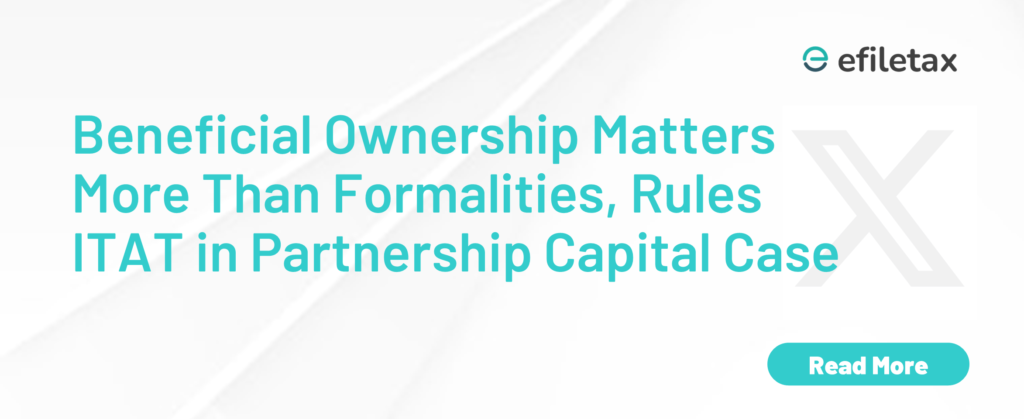
Intro Paragraph
Beneficial ownership in partnership capital can validate fund introduction even when legal documentation is incomplete. In a recent Income Tax Appellate Tribunal (ITAT) ruling, the focus shifted from strict procedural adherence to economic reality. This blog explains the case, its implications, and practical takeaways for Indian firms.
Why This ITAT Ruling Matters
The ITAT’s judgment reaffirms a key principle: substance over form. Here’s what the ruling clarified:
- A partner introduced ₹10 lakh as capital into a firm.
- The AO questioned the genuineness due to the absence of proper documentation and PAN linkage.
- ITAT upheld the investment based on financial trail, bank transactions, and credible ownership.
Key takeaway: Beneficial ownership, backed by clear financial proof, can override technical lapses.
Beneficial Ownership in Partnership Capital: What It Means
- Beneficial owner is the person who ultimately owns or controls the funds, even if formal documentation says otherwise.
- In partnerships, capital contributions often come from partners’ personal accounts, third-party loans, or business channels.
- If the origin, routing, and use of funds are clean, legal formalities can’t alone discredit the transaction.
Legal Reference & Ruling Highlights
- Case Law: [2024] 158 taxmann.com 250 (ITAT Jaipur)
- Citations: Section 68 of the Income Tax Act – unexplained cash credits
- ITAT View: Where the source is proven and ownership is not in doubt, AO cannot deny the capital as unexplained.
How to Prove Beneficial Ownership – Practical Checklist
| Requirement | Proofs Accepted |
|---|---|
| Source of funds | Bank statements, income proofs |
| Ownership trail | PAN linkage, financial records |
| Business purpose of capital intro | Partnership deed, capital account entry |
| Transparency in routing | Direct transfers, non-cash evidence |
Expert Insight
“Beneficial ownership is a factual test. The ITAT rightly prioritized economic reality over missing paperwork,” says CA Rohit Sharma, Tax Advisor.
Frequently Asked Questions (FAQ)
Q1. Can capital introduced without PAN be accepted?
Yes, if ownership and transaction trail are clean and verified.
Q2. What if funds come from family or borrowed sources?
Still valid—if you prove the ultimate source and repayment/loan terms.
Q3. Does Section 68 always apply to partnerships?
No. If the partner is identified and proves source, Section 68 may not sustain.
Final Thoughts: Economic Substance Over Legal Form
This ITAT ruling is a reminder for businesses: focus on clean documentation, ownership trail, and financial transparency. Even if legal paperwork is delayed or deficient, beneficial ownership can protect your capital inflows.